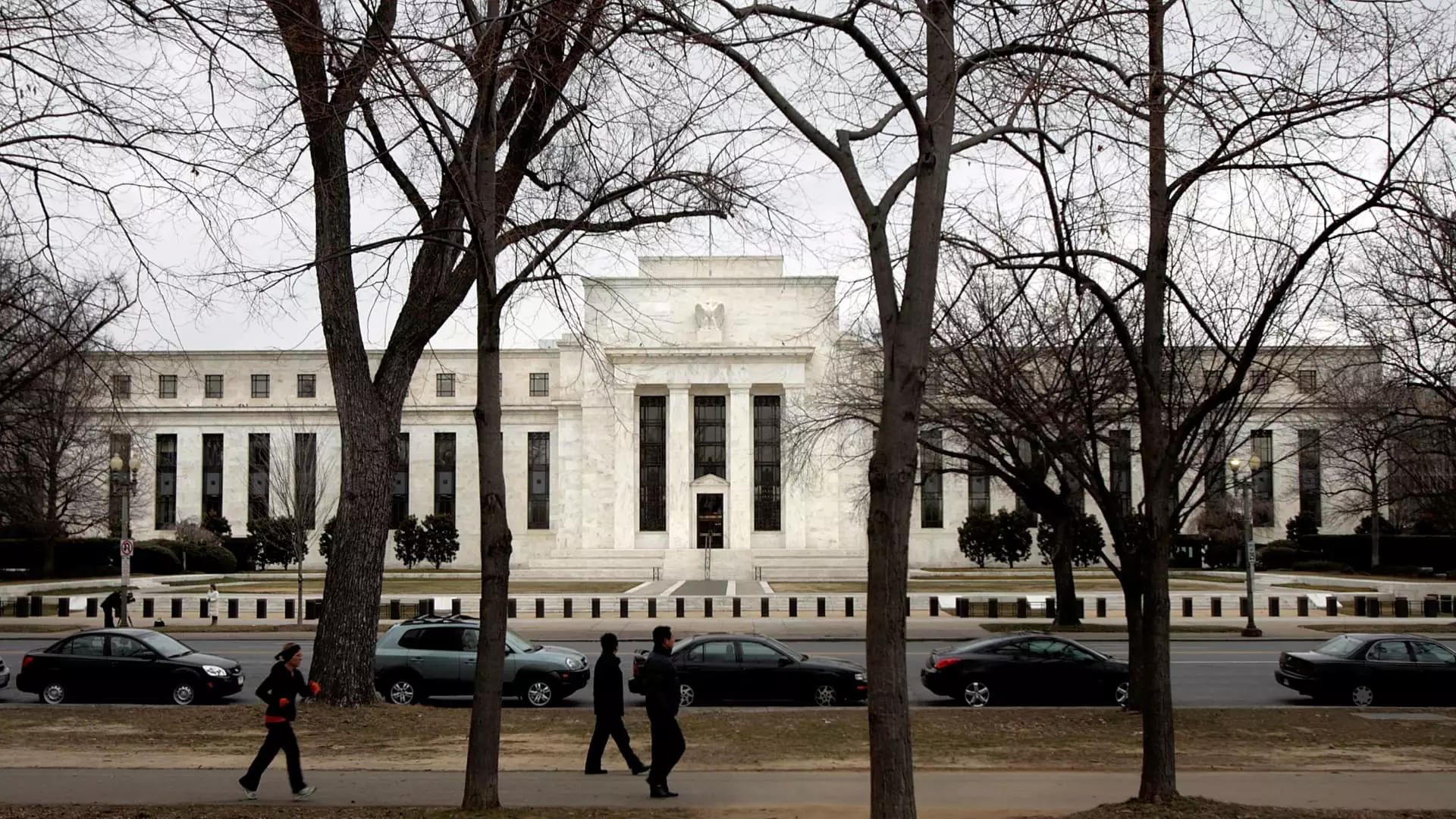In a significant move that reverberated across financial markets and consumer behaviors, the Federal Reserve declared on Wednesday that it would maintain its current interest rates amid persisting inflationary pressures that exceed its target of 2%. This decision not only reflects the central bank’s cautious approach to monetary policy but also aligns with broader economic concerns, especially as the nation grapples with the repercussions of high borrowing costs and price hikes affecting consumers.
The backdrop of this decision is critical. Over the past year, the Federal Reserve had launched a series of interest rate hikes to curb soaring inflation, which had reached levels not seen since the early 1980s. The federal funds rate now stands at a historic high, the result of aggressive tightening measures. Recently, President Trump’s return to the political spotlight has added another layer of complexity; he has publicly urged for immediate reductions in interest rates, further igniting discussions about the independence of the Federal Reserve. This political interplay raises questions about the future trajectory of monetary policy and its implications for the economy.
Despite some experts indicating a potential for rate reductions later in the year, the overall sentiment remains cautious. Michele Raneri, a prominent analyst, pointed out that while inflation fears have somewhat subsided, prospects for significant rate cuts seem limited. This insight underscores the unpredictability surrounding consumer relief in an economy marked by high prices and elevated borrowing costs.
For many consumers, the current financial landscape is becoming increasingly burdensome. High interest rates have resulted in soaring borrowing costs, affecting various sectors such as credit cards, mortgages, and auto loans. For instance, the average interest rate for credit cards has escalated dramatically, surpassing 20%—a figure that places immense strain on households already grappling with inflated costs of living. Greg McBride, a financial analyst, argues that the anticipated rate cuts may not be substantial enough to alleviate the pain felt by consumers. This raises troubling implications for families relying on credit for everyday purchases, suggesting that financial relief is not on the horizon.
As consumers struggle to manage their debts, experts are recommending strategies to mitigate the impact of high-interest rates. For instance, consolidating credit card debt through personal loans with lower interest rates or utilizing 0% balance transfer credit cards could provide some respite. However, these solutions require careful planning and discipline from consumers, who must navigate a challenging economic environment.
Real Estate and Auto Loans: The Strain of High Rates
The situation is no less dire for those looking to buy homes. The repercussions of sharply increased interest rates have dampened purchasing power significantly. Current mortgage rates hover just above 7%, greatly complicating the home-buying process for many first-time buyers. McBride notes that while future projections indicate that mortgage rates may stabilize in the 6% range, current homeowners are left with little flexibility unless they sell or refinance their properties. The fixed nature of these loans means that for the time being, consumers are locked into high rates while new entrants face challenging economic dynamics.
Meanwhile, the auto loan landscape is also marred by economic uncertainty. Rising prices for new vehicles combined with high-interest rates have led to unprecedented loan amounts. Joseph Yoon from Edmunds assesses that while potential rate cuts could offer some relief, the persistent increase in vehicle prices poses a significant challenge for affordability. This situation points to a broader issue wherein consumers find themselves squeezed by both high borrowing costs and escalating prices in essential markets.
Future Considerations and the Role of Saving
On the flip side, the current monetary policy stance by the Federal Reserve bears some positive news for savers. High-yield savings accounts are providing competitive interest rates, as yields tend to correlate with the federal funds rate. As Schulz mentions, for those able to save money, this period might present an advantageous opportunity, despite the pressure on borrowers.
The Federal Reserve’s decision to maintain interest rates amid ongoing inflation underscores a precarious balancing act between curbing inflation and fostering economic growth. As consumers continue to navigate the fallout from high prices and borrowing costs, the pressure on financial decision-making intensifies. The implications of these economic policies will likely resonate far beyond the immediate term, shaping consumer behaviors and broader economic trends in the months to come. The intersection of monetary policy, consumer sentiment, and economic outcomes will remain a critical space to watch as we move forward.

